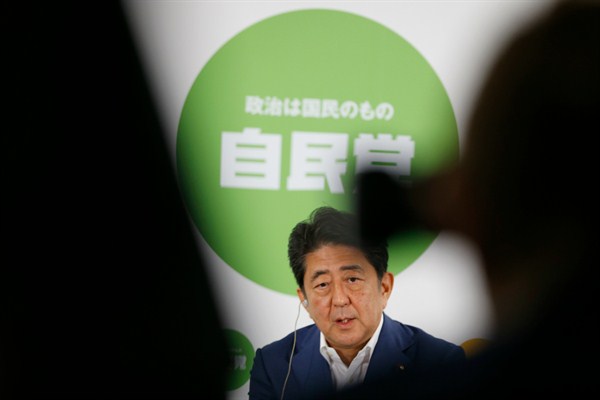Earlier this month, Japan’s ruling Liberal Democratic Party (LDP) marched to an unsurprising, if not significant, election victory in the upper house of Japan’s parliament, the Diet. The LDP and its coalition partner, the Komeito Party, scored 70 of the House of Councilors’ 121 contested seats and now control a combined 146 of its 242 seats overall. Their victory, coupled with the LDP-Komeito coalition’s significant majority in the Diet’s lower house, ensures that Japanese Prime Minister Shinzo Abe will have firm legislative control at least until the fall of 2018, when his term as president of the LDP is set to expire.
That has significant implications for Abe’s controversial economic policies, known as “Abenomics,” and his contentious plans to revise Japan’s pacifist constitution. But with the vote representing more of an acceptance of the status quo than a ringing endorsement of Abe’s program, he still faces plenty of resistance going forward.
On the economic front, Abe is likely to double down on his strategy to revitalize Japan’s economy through a combination of fiscal stimulus, quantitative easing and structural reform. Since Abe was first elected in late 2012, he has pledged to construct economic policies that would dig Japan out of deflation and help spur economic growth.

